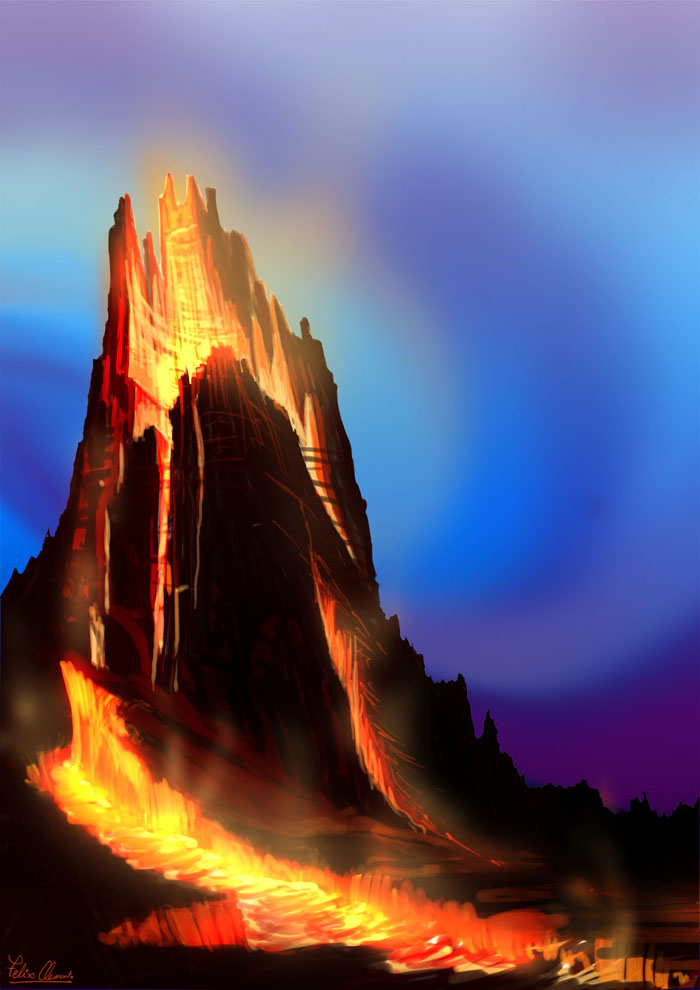Volcano erupting painting is a captivating subject that has fascinated artists and art lovers alike for centuries. The sheer power and beauty of volcanic eruptions inspire a unique blend of fear and admiration, making it a popular theme in the art world. In this article, we will explore the historical significance of volcano paintings, the techniques used by artists to capture their majesty, and the impact these works have on our understanding of nature.
Table of Contents
- Historical Significance of Volcano Erupting Paintings
- Notable Artists and Their Masterpieces
- Techniques Used in Volcano Erupting Paintings
- Impact on Viewers and Cultural Understanding
- Famous Volcano Erupting Paintings to Explore
- Modern Interpretations of Volcano Erupting Art
- Preserving Art Inspired by Volcanic Eruptions
- Conclusion
Historical Significance of Volcano Erupting Paintings
The history of volcano erupting paintings dates back to ancient civilizations, where volcanic activity was often viewed as a sign of divine wrath or natural catastrophe. Early artists documented eruptions to capture the enormity of nature's power, often blending realism with mythological narratives. For example, the eruption of Mount Vesuvius in 79 AD, which destroyed Pompeii, has been depicted in various art forms throughout history, emphasizing its catastrophic impact.
Art as Documentation
In many cases, these paintings serve as historical records of volcanic activity, providing insights into past events that shaped landscapes and societies. The detailed representations of eruptions allow historians and geologists to study the visual documentation of volcanic activity over time.
Notable Artists and Their Masterpieces
Throughout art history, several artists have stood out for their exceptional depictions of volcanic eruptions. These artists not only capture the physicality of these events but also convey the emotions associated with them.
J.M.W. Turner
One of the most renowned artists in this genre is British painter J.M.W. Turner. His work "The Eruption of Mount Vesuvius" (1817) showcases his signature use of light and color to depict the chaos of an eruption. Turner's ability to evoke emotion through his landscapes has made his volcano paintings timeless.
John Martin
Another significant figure is John Martin, known for his dramatic and apocalyptic scenes. His painting "The Great Day of His Wrath" (1851) features a volcanic eruption that serves as a metaphor for divine judgment. Martin's theatrical style emphasizes the sublime nature of volcanic eruptions, making his works both awe-inspiring and terrifying.
Techniques Used in Volcano Erupting Paintings
Artists employ various techniques to effectively convey the intensity of volcanic eruptions. From brushwork to color manipulation, each element plays a crucial role in creating a vivid representation of these natural phenomena.
Color Palette
- Warm Colors: Artists often utilize reds, oranges, and yellows to depict the fiery aspect of lava.
- Cool Colors: Blues and greens may be used to represent smoke and ash, creating a contrast that heightens the drama.
Brush Techniques
The technique of brushwork is essential in creating movement and texture. Artists may use swift strokes to mimic the violent eruptions or softer strokes to depict the aftermath of a volcanic event, showcasing the landscape's transformation.
Impact on Viewers and Cultural Understanding
Volcano erupting paintings have a profound impact on viewers, shaping our understanding of nature's power. These artworks evoke a sense of awe and respect for the forces that shape our world.
Emotional Response
Viewers often experience a mix of fear and fascination when confronted with the raw power of volcanoes depicted in art. This emotional response can lead to a greater appreciation for natural disasters and their effects on human life.
Cultural Reflection
Moreover, these paintings reflect cultural attitudes toward nature and disasters. In some cultures, volcanic eruptions are seen as a form of punishment or cleansing, while in others, they are celebrated as a part of the natural cycle of life.
Famous Volcano Erupting Paintings to Explore
Several iconic volcano erupting paintings deserve special attention for their artistic merit and historical significance.
- "The Eruption of Krakatoa" by Ludwig Faber: This painting captures the explosive eruption of Krakatoa in 1883, illustrating the dramatic scene with precision.
- "Vesuvius Erupting" by Joseph Mallord William Turner: A classic representation of the infamous volcano, showcasing Turner's masterful use of color and light.
- "Mount St. Helens" by John O'Sullivan: A contemporary painting that reflects on the 1980 eruption, highlighting the ongoing relevance of volcanic events in modern times.
Modern Interpretations of Volcano Erupting Art
While traditional techniques remain prominent, contemporary artists are exploring new mediums and styles to depict volcanic eruptions.
Mixed Media Approaches
Modern artists often incorporate mixed media, including photography, digital art, and installation, to create immersive experiences that engage viewers on multiple levels. This evolution reflects our current understanding of natural disasters and the urgent need to address issues such as climate change and environmental degradation.
Preserving Art Inspired by Volcanic Eruptions
As volcanic eruptions continue to pose threats to communities worldwide, preserving art inspired by these events becomes increasingly important. Museums and galleries play a crucial role in safeguarding these works for future generations.
Conservation Efforts
Efforts to conserve volcanic art involve careful restoration and climate-controlled environments to prevent deterioration. These practices ensure that the emotional and historical significance of these artworks endures over time.
Conclusion
In conclusion, volcano erupting paintings serve as powerful representations of nature's fury and beauty. Through the works of notable artists, we gain insights into the historical and cultural significance of these events. The techniques employed by artists highlight the ongoing relationship between humanity and the natural world, fostering a deeper appreciation for the forces that shape our environment.
We invite you to share your thoughts on volcano erupting paintings in the comments below, and don't forget to explore other articles on our site related to art and natural phenomena.
Thank you for reading! We hope you found this exploration of volcano erupting paintings both informative and inspiring. We look forward to your return for more engaging content.




